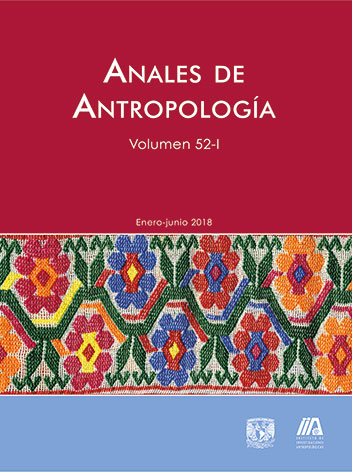Análisis de morfometría geométrica de senos frontales en poblaciones mesoamericanas
Contenido principal del artículo
Resumen
Con la finalidad de identificar afinidades biológicas entre poblaciones del sitio arqueológico de Teotihuacan, se efectuó un análisis morfológico de los senos frontales de un total de 125 individuos adultos prehispánicos de ambos sexos exhumados en diferentes exploraciones. La muestra incluye un sector de los sujetos sacrificados en el Templo de la Serpiente Emplumada de Teotihuacan, otro del Posclásico, y cráneos mayas hallados en la Cueva de las Banquetas. Asimismo se usó una muestra control de 14 habitantes de la Ciudad de México mediante el uso de tomografía.
Los datos morfológicos fueron analizados usando la técnica de morfometría geométrica. Se observó que la población del Posclásico se separa completamente de las poblaciones Clásicas de Teotihuacan (Estado de México) y la Cueva de las Banquetas (Chiapas), en tanto que los individuos encontrados en el Templo de la Serpiente Emplumada presentan una mayor afinidad con las poblaciones mayas que con la población teotihuacana. En lo referente a la variación que presenta cada grupo, se observó que la muestra de Teotihuacan es la que presenta más dispersión en la morfología de los senos frontales. Este dato concuerda con el papel que desempeñó esta urbe como centro económico, ideológico y cultural. La investigación muestra que el estudio de los senos frontales es un marcador fiable para estudiar afinidades biológicas en poblaciones antiguas. Una de sus ventajas es que es factible incluir tanto cráneos completos como fragmentos de huesos frontales, ampliando así el tamaño de la muestra.
Descargas
Detalles del artículo
Citas en Dimensions Service
Esta revista usa una licencia CC del tipo CC BY-NC-ND 3.0. Se maneja bajo el esquema de acceso abierto, con una licencia Creative Commons Attribution-NonCommercial-NoDerivs 3.0 Unported.

